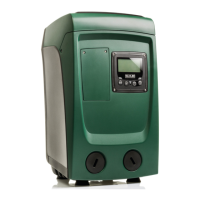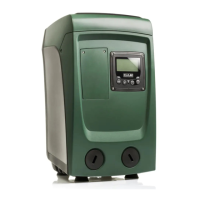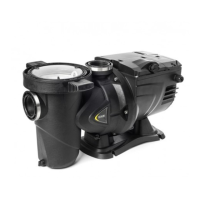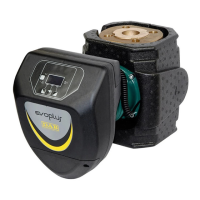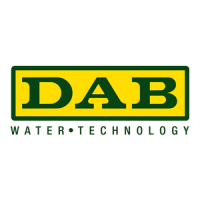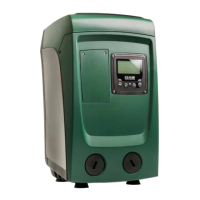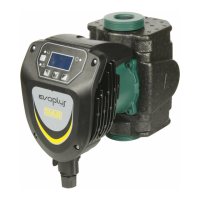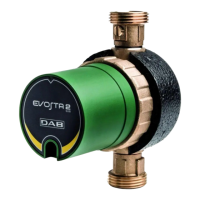ENGLISH
102
GB
9.4.8 - Assigning the starting order
Each time the system is switched on a starting order is associated with
each device. Depending on this, the sequential starts of the devices are
decided.
The starting order is modied during use as necessary by the following
two algorithms:
• Reaching the Max. switching time
• Reaching the maximum inactivity time
9.4.9 - Max. switching time
Depending on the parameter ET (Max. switching time), each device has a
working time counter, and depending on this the starting order is updated
with the following algorithm:
• if at least half of the ET value has been exceeded, the priority
is exchanged the rst time the inverter switches off (exchange
to standby);
• if the ET value is reached without ever stopping, the inverter is
switched off unconditionally and is taken to minimum restarting
priority (exchange during running).
If the parameter ET (Max. switching time) is set at 0, there is an
exchange at each restart.
See 7.6.11 - ET: Max. switching time.
9.4.10 - Reaching the maximum inactivity time
The multipump system has an anti-stagnation algorithm, the aim of which
is to keep the pumps in perfect working order and to maintain the integrity
of the pumped uid. It works by allowing a rotation in the pumping order so
as to make all the pumps supply at least one minute of ow every 23 hours.
This happens whatever the device conguration (enabled or reserve). The
exchange of priority requires that the device that has been stopped for 23
hours be given maximum priority in the starting order. This means that as
soon as it is necessary to supply ow, it will be the rst to start. The devices
congured as reserve have precedence over the others. The algorithm
ends its action when the device has supplied at least one minute of ow.
When the intervention of the anti-stagnation algorithm is over, if the device
is congured as reserve, it is returned to minimum priority to preserve it
from wear.
9.4.11 - Reserves and number of devices that participate in pumping
The multipump system reads how many elements are connected in com-
munication and calls this number N.
Then depending on the parameters NA and NC it decides how many and
which devices must work at a certain time.
NA represents the number of devices that participate in pumping. NC rep-
resents the maximum number of devices that can work at the same time.
If there are NA active devices in a chain and NC simultaneous devices with
NC smaller than NA, it means that at the most NC devices will start at the
same time and that these devices will exchange with NA elements. If a de-
vice is congured with reserve preference, it will be the last in the starting
order, so for example if I have 3 devices and one of these is congured as
reserve, the reserve will be the third element to start, whereas if I set NA=2
the reserve will not start unless one of the two active ones develops a fault.
See also the explanation of the parameters
7.6.8 - NA: Active devices;
7.6.9 NC: Simultaneous devices;
7.6.10 IC: Conguration of the reserve.
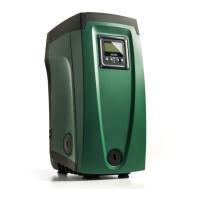
